Oslo is being rebuilt around something city-dwellers don’t know they’ve lost: “slow space”
oslo
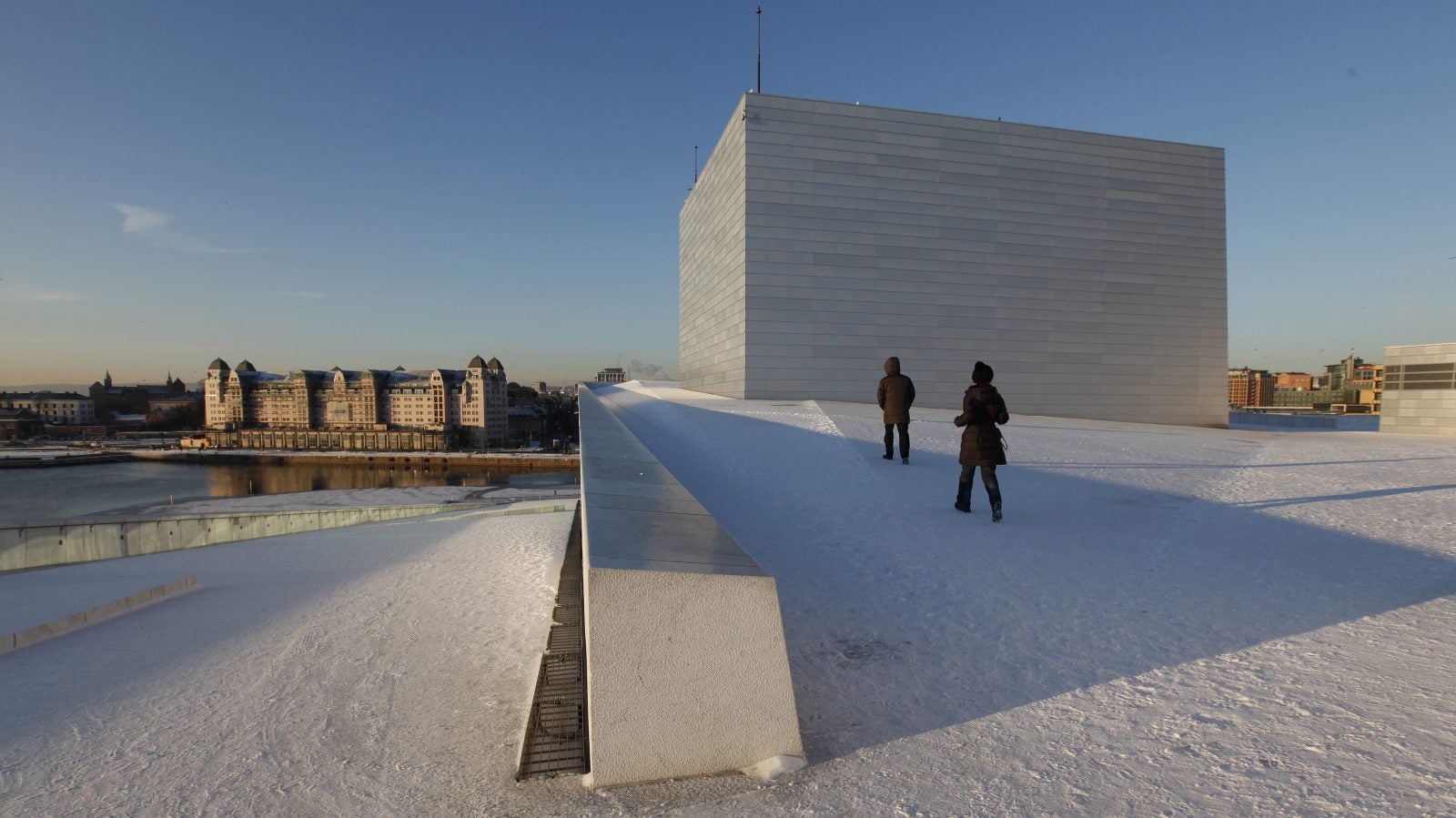

oslo
Fine rain is needling between the young pines, planted here two years ago as part of a project that’s remaking huge swathes of Oslo. The city is going through a vast redevelopment of its harbor and, as part of that, a deep rethink of public space. Residents can get to this forest in 30 minutes by public transport, and walk among the trees.
They do so knowing that each of these 1,000 pines is destined to be made into a book one day. The manuscripts for the 100 books that will make up the Future Library (as the project is known) are gradually accumulating, unread, in Oslo’s public library. And no one but the youngest children playing between the trees today will live to see it happen.
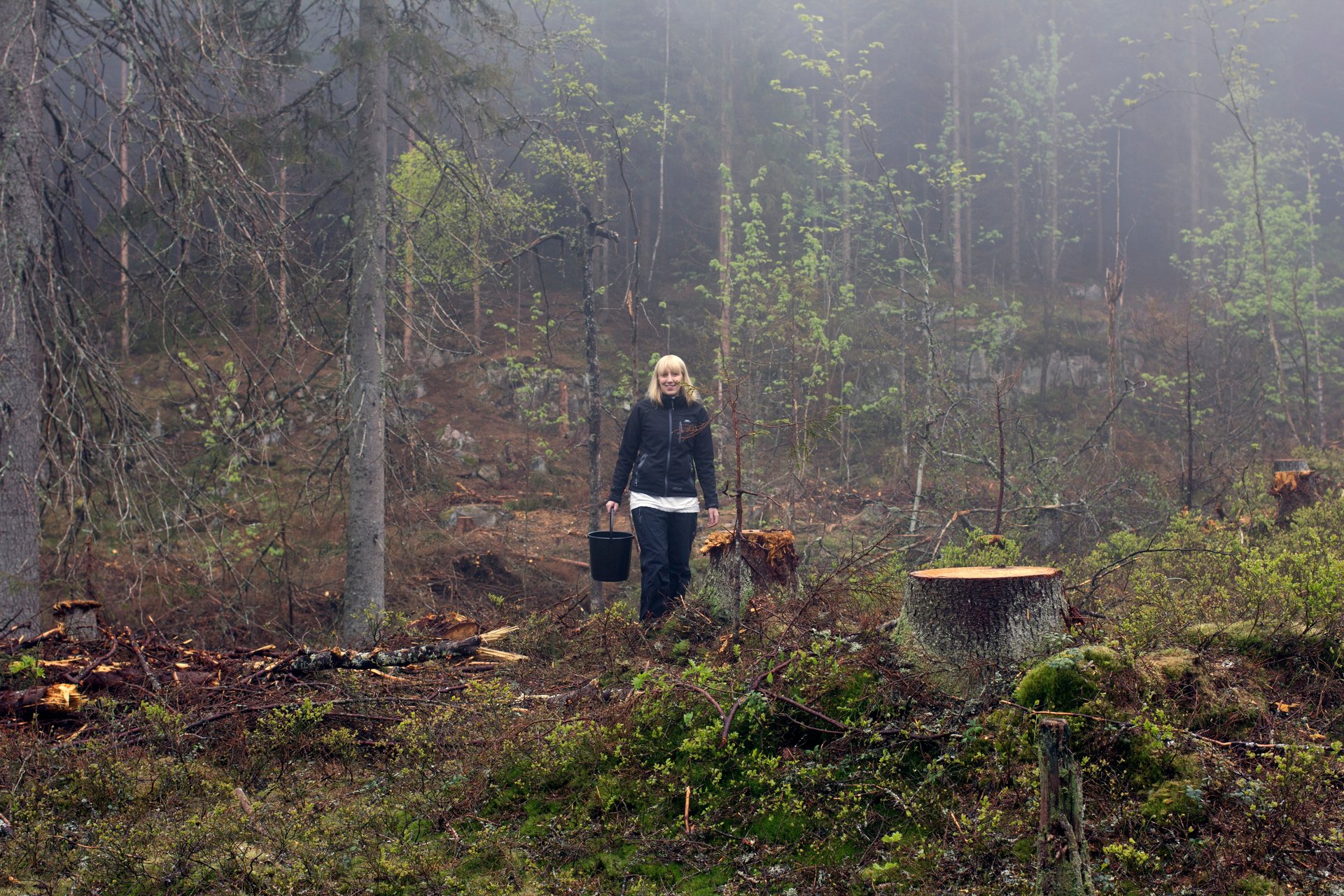
This is a 100-year art project. Conceived by Scottish artist Katie Paterson, one book will be written every year as the trees grow to maturity. Paterson and the authors will have to trust others to bring it to fruition. (A trust has been set up for that purpose).
Creating a timescale longer than the average human life means that the whole project is in some sense a reminder of our own mortality. That’s led to some negative reactions, the curators say, when people realize the result—the publication of the books—won’t happen in their lifetime. But others love the expansive nature of the project, the sense it gives of time stretching away unbroken into the future, and therefore of a legacy being conserved for later generations. For them, it’s not about outcomes. There’s no rush to finish, to fully absorb or to complete the experience. This is what Oslo’s public space curators mean when they talk about “slow space.”
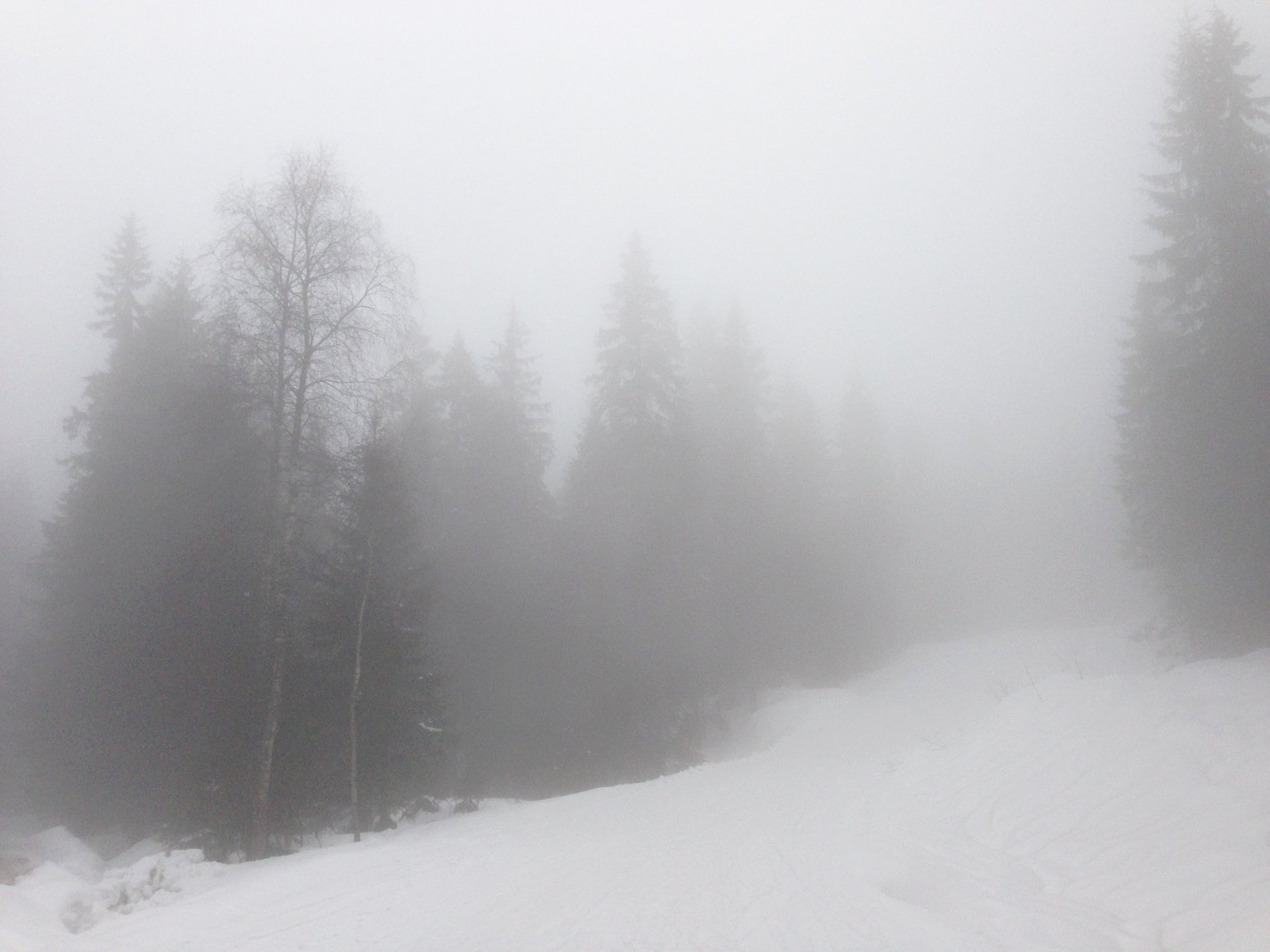
Fast spaces
“For most of us from now on, life and death will be an urban affair,” the World Health Organization wrote in a 2016 report (pdf) on cities and health. More people globally already live in cities than outside them. By 2030, 60% of the world’s population will be urban, proportionally twice the number as in 1950, according to the WHO.
Oslo is tiny compared to many major cities, with fewer than 650,0000 residents, but the redevelopment is part of a growth spurt that’s turned the city into Europe’s fastest growing capital. And even this wealthy capital of oil-rich Norway subjects its residents to the same issues as cities all over the world, be they old or new, historic or modern: restricted open space, pollution, overwhelming proximity to others, intense work environments, inadequate public transport networks, and social lives barreling along at what can seem an unlivable pace.
Oslo’s citizens have an additional burden to shoulder, because the city’s massive redevelopment is anything but slow, or quiet. The harbor area was long characterized by sprawling road junctions and tunnels, empty lots, and wasteland. Now cranes tower over the waterfront, a new financial district known as “the barcode” has sprung up, and luxury apartment buildings stretch out into the fjord on reclaimed land. An opera house was completed in 2008, and a Munch museum is under construction. (The Norwegian artist’s most famous series of paintings, The Scream, show a view from the hill behind the cranes). The new public library building is next on the agenda.

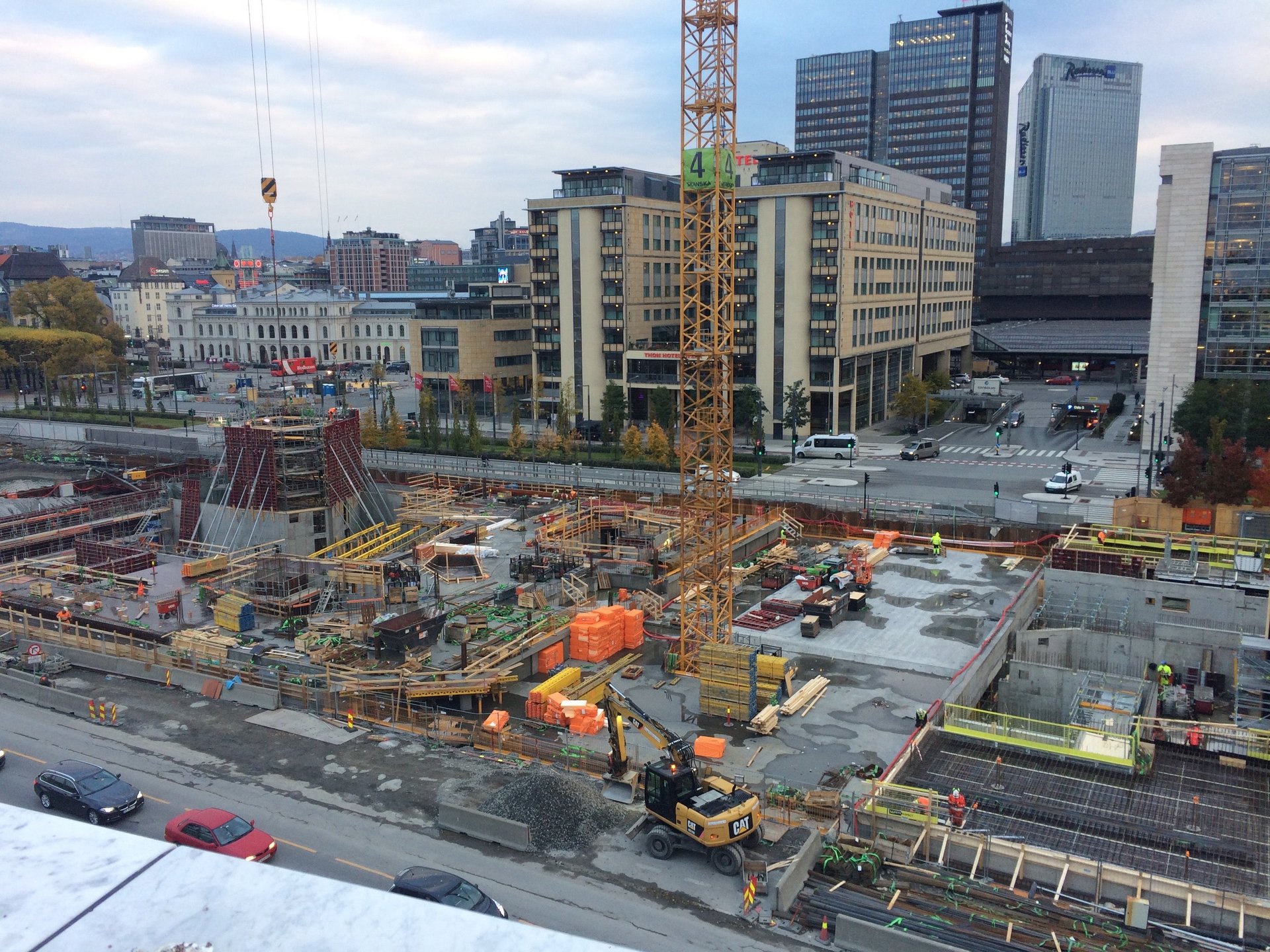
The city’s public space program exists at the center of this rush to build, change, and populate. Its curators, a tiny official team with connections to a network of artists and volunteers, are particularly concerned with how ordinary Norwegians will interact with all this newness. It’s leading them to wrestle with questions ranging from the meaning of art to humans’ relationship to nature; from emptiness to time; from life to death.
Whose art is it anyway?
What’s the connection between public space and public art?
Anne Beate Hovind, who oversees the art budget and curates public space for Bjørvika Infrastruktur, the property company in charge of the infrastructure for Oslo’s redevelopment, says that very much depends on what you think art means.
“Art for [a number of] my colleagues, is something in bronze, possibly an elk,” she says.
On her laptop screen, a photo of a statue close to Oslo’s main river: an elk and an “elk dog”, a species bred in Norway for hunting.
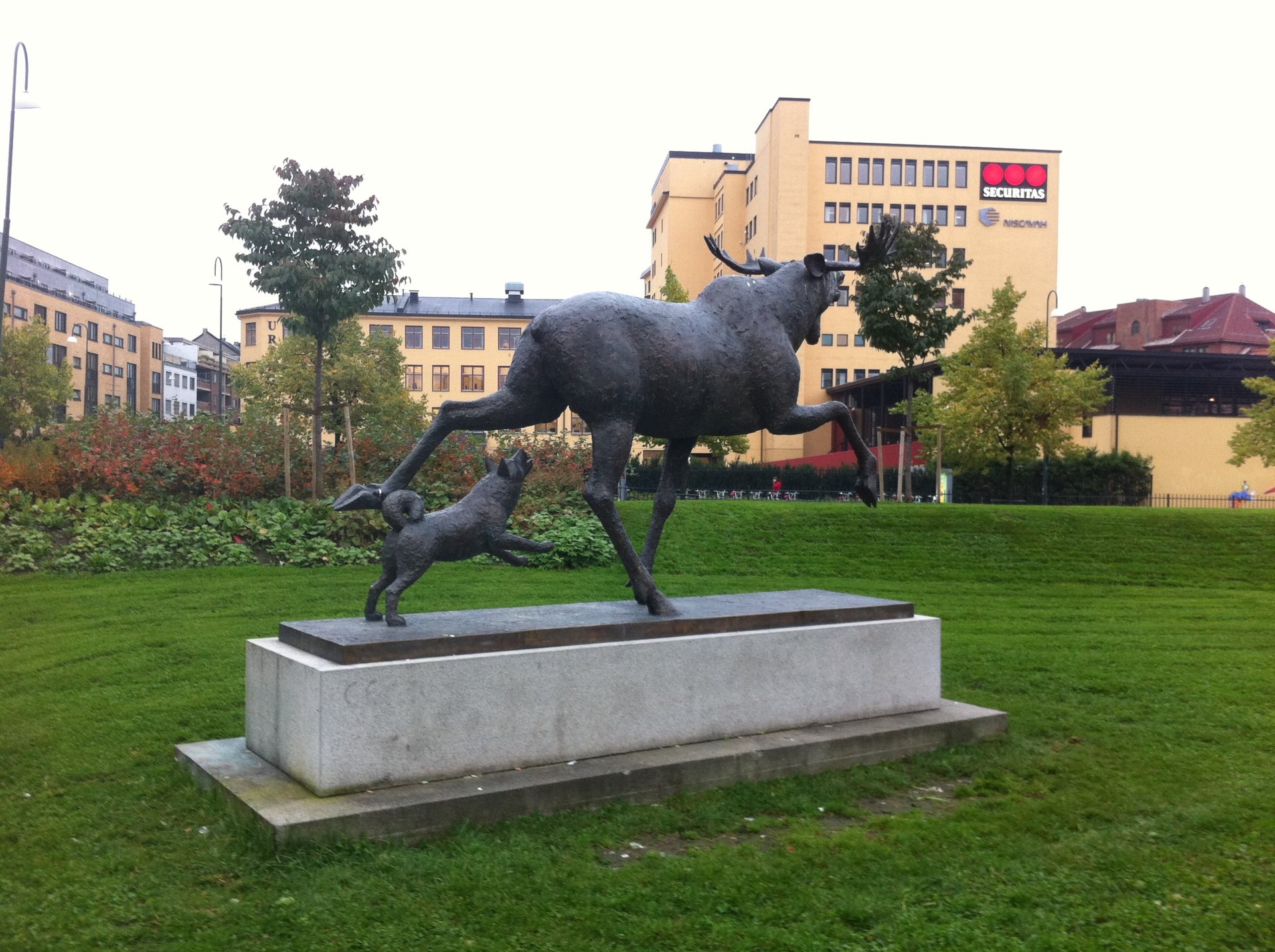
(Hovind says that the city has a lot of such pieces, and once you start noticing them the fact is hard to ignore. On plinth after plinth not only elks but large bronze clothed men, and less-clothed women, constantly confront any walker through Oslo’s streets.)
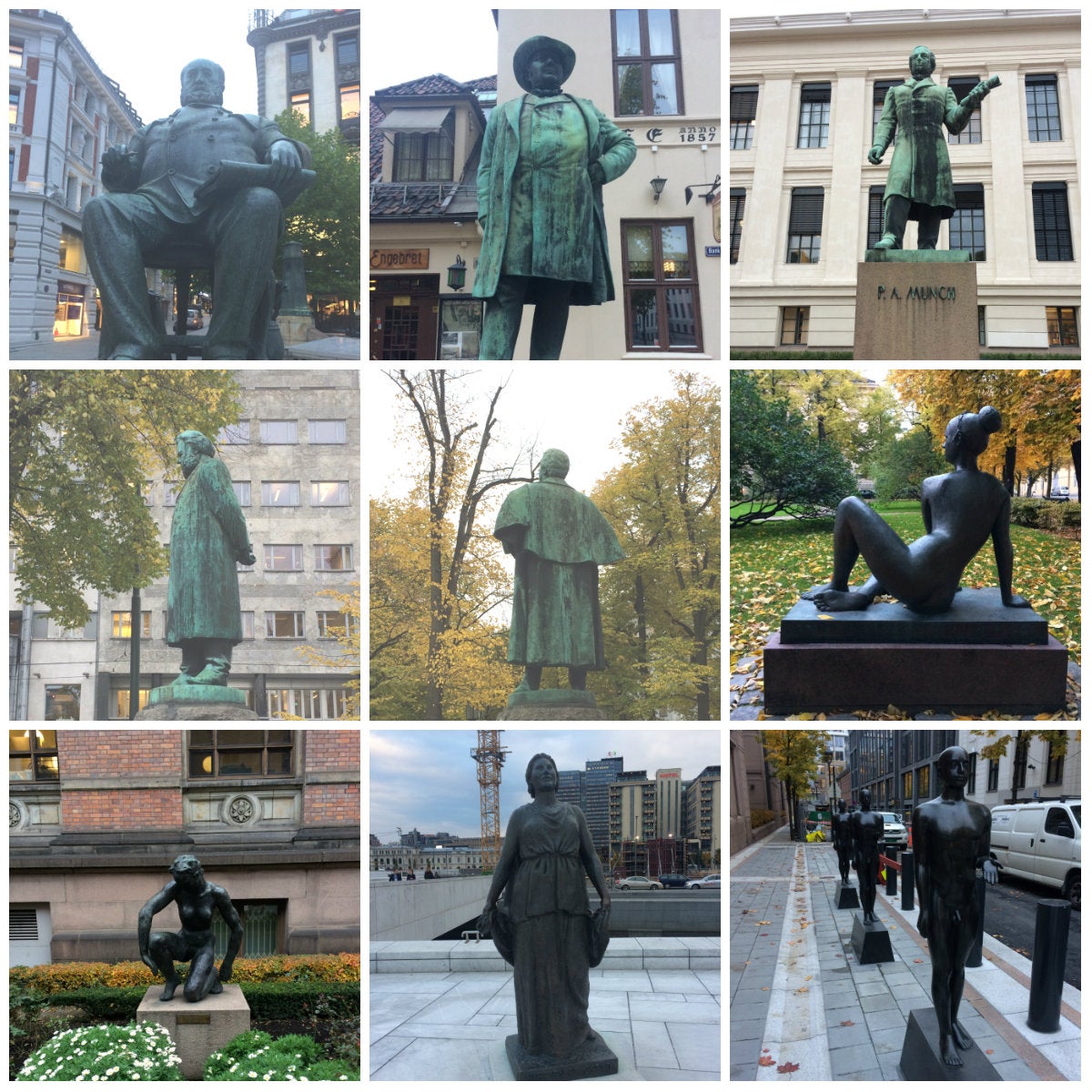
“Art” can often be seen as a quick way of dressing up a space, but with little thought to how people actually use it, says Hovind. The decision-making process goes, “Oh, let’s have an art piece here on this corner,” she says. “And then the easiest way is to go and buy one of these, because that’s how we understand art.”
But the last thing this affluent city needs, Hovind explains, is another sculpture.
She cites the work of Italian art philosopher Riccardo Caldura, an advocate for recognition of “the quality of nothing,” as she gestures around the interior of the opera house where we’re meeting, and out at the huge sloping roof beyond the windows. More important than filling such spaces with objects could be allowing people ways to spend time in them, she explains.
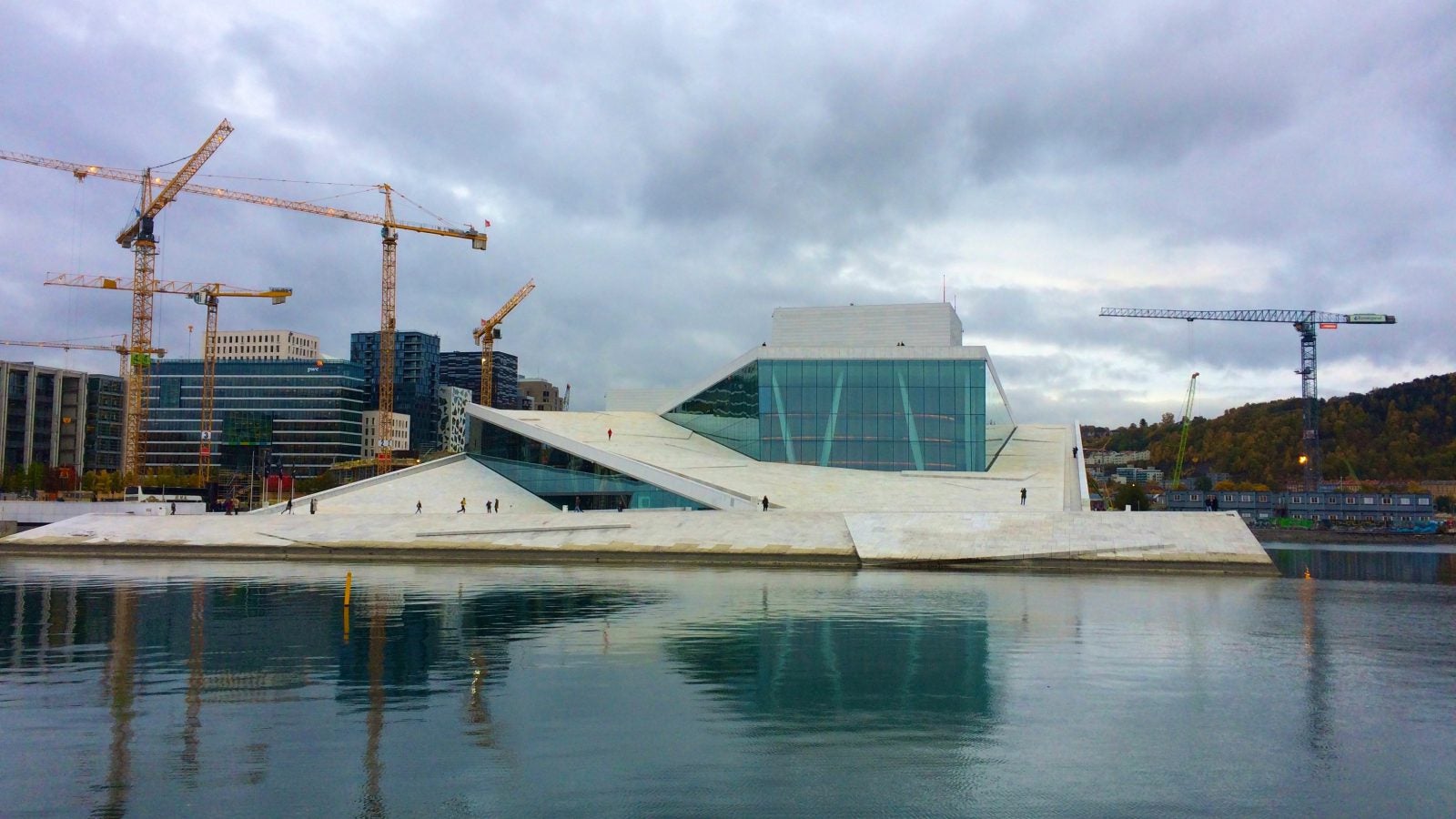
The building, designed by Snøhetta, a Norwegian architectural firm, is a wedge of white marble that sweeps out into the bay. Locals can cycle on the roof, and walk up its incline. The meditative interaction is part of “the slowness,” Hovind says.
“If you walk the roof of this building, that’s when you feel this. In the middle of the city you can walk the building and feel like you’re in the mountains,” she says. There is nothing to stop people diving off the roof into the sea, and in summer they do. When the weather’s warm, the roof fills up with sunbathers.
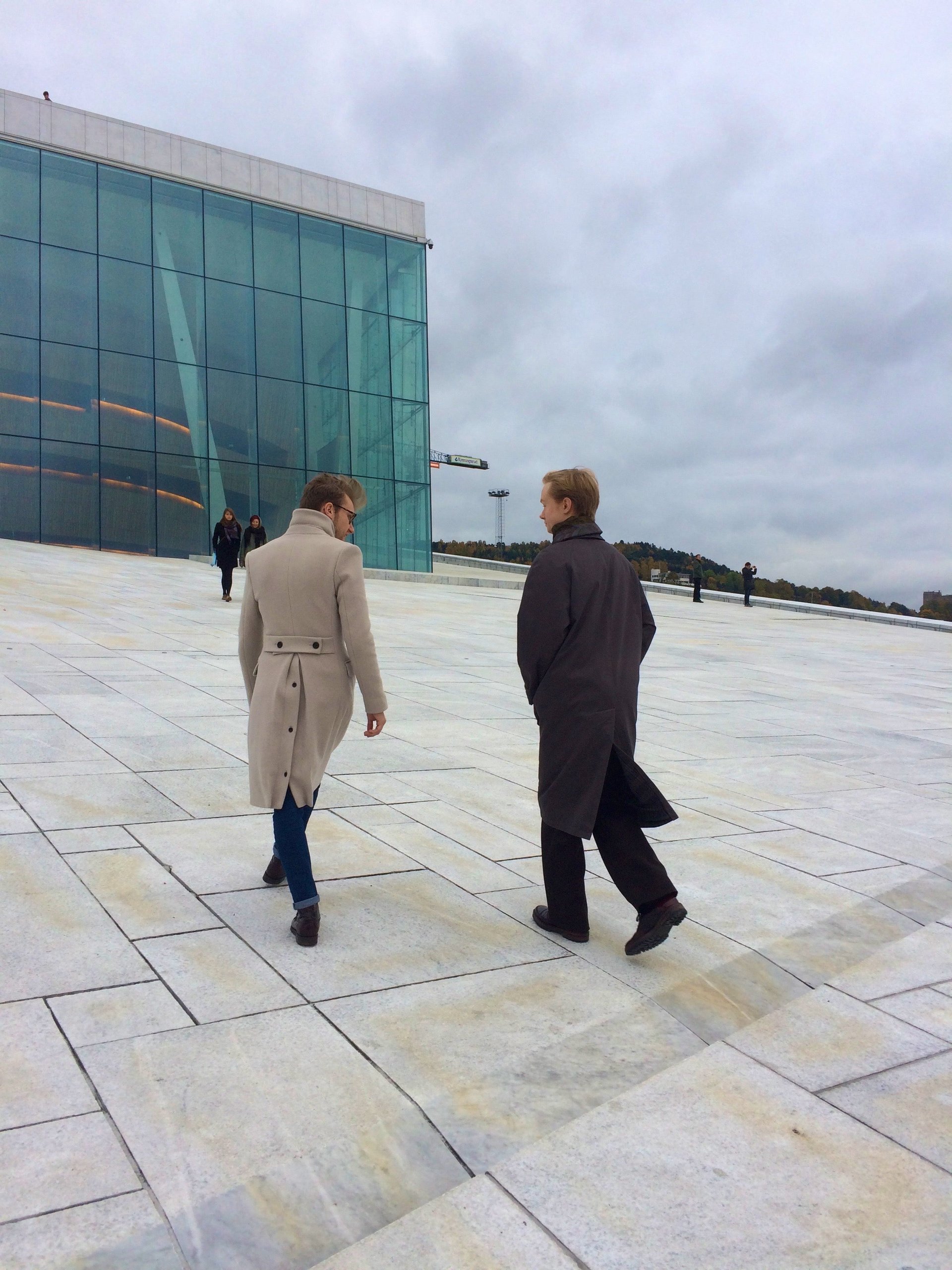
From a small seed
The concept of slow space is an integral part of the public art program for Oslo’s harbor. It draws in part on the writings of environmental philosopher Arne Johan Vetlesen. In his book, The Denial of Nature, he examines how cut off humans have become from the natural world.
Future Library was the first piece commissioned as part of the slow space project. The name itself was devised by arts organization Situations, based in Bristol, UK, back in 2011. They also introduced the artists to the Oslo-based managers.
Katie Paterson’s work tends to deal with the natural world, ideas of conservation, and human interaction with both nature and time. She has mapped dead stars, and put a microphone connected to a phone line under a glacier, so that anyone in the world could call and hear it shift.
The Future Library trees, planted in a public forest that encircles Oslo, will be cut down in 2114. Each year between 2014 and then, a completed manuscript will be delivered by an eminent writer. Margaret Atwood wrote the first, David Mitchell the second, and Icelandic poet Sjón—also a lyricist who has collaborated with Björk—is writing the third. The writers’ contracts state that no one will read them until they are published as books. They will be stored in a purpose-built room made from the wood of the trees cleared for the planting space. (The library, and the room within it, have yet to be built.)
It’s “an act of optimism,” Atwood said after she walked into the forest to part with her boxed manuscript, Scribbler Moon, at the first delivery ceremony in 2014.
For her second project, Hovind turned her attention to a particularly drab swath of land she saw every day on her way to work. (Something of a polymath with a history of working across complex logistics and the arts, she was working at the time on the five-year construction project of a new hospital). The area was wasteland: gravel covering a tunnel beneath, punctuated by two huge ventilation chimneys.
Now the land is smothered in marigolds and artichokes, carrots and Michaelmas daisies.

The inspiration to create the community farm came from Amy Franceschini, an America artist whose Futurefarmers collective explores land use and food. Part of the project, called Losæter (a composite of Norwegian words invoking nearness to the sea and commonality), is a field of ancient grains. Another part holds dozens of numbered, raised beds in which locals tend vegetables and flowers.
In October 2016 a wood-beamed bakehouse was completed, making permanent a structure where Flatbread Society—a group that has sprung up to run the farm—holds community baking workshops. When you’re trying to bring people together, the public space curators discovered, bread is a universal language.
Bringing the countryside into the city was more literal in this case than in that of the forest. The plants needed soil, and the road-tunnel roof had none. Fifty organic farmers donated soil, and 60 large truckfuls had to be bought and brought to the site.
The sea in the city
Bjørvika Infrastruktur has allocated 1% of its total investment budget to art, three quarters of which will be spent on “permanent” pieces and the rest on temporal experience. This comes to about 22 million Norwegian kroner, or $2.6 million.
It’s a tiny percentage of the total amount being spent on the harbor redevelopment as a whole—which will include office space for 20,000 people and 5,000 apartments—forcing the curators to be creative with the funds.
There are still six public spaces to develop, plus a promenade along the length of the harbor. Much emphasis has been placed on bringing the sea into the city. Some of the spaces it’s developing could turn out to have more conventional uses than the farm or the forest. At the end of the harbor, beyond the luxury flats, a sea-bathing pool has been built.
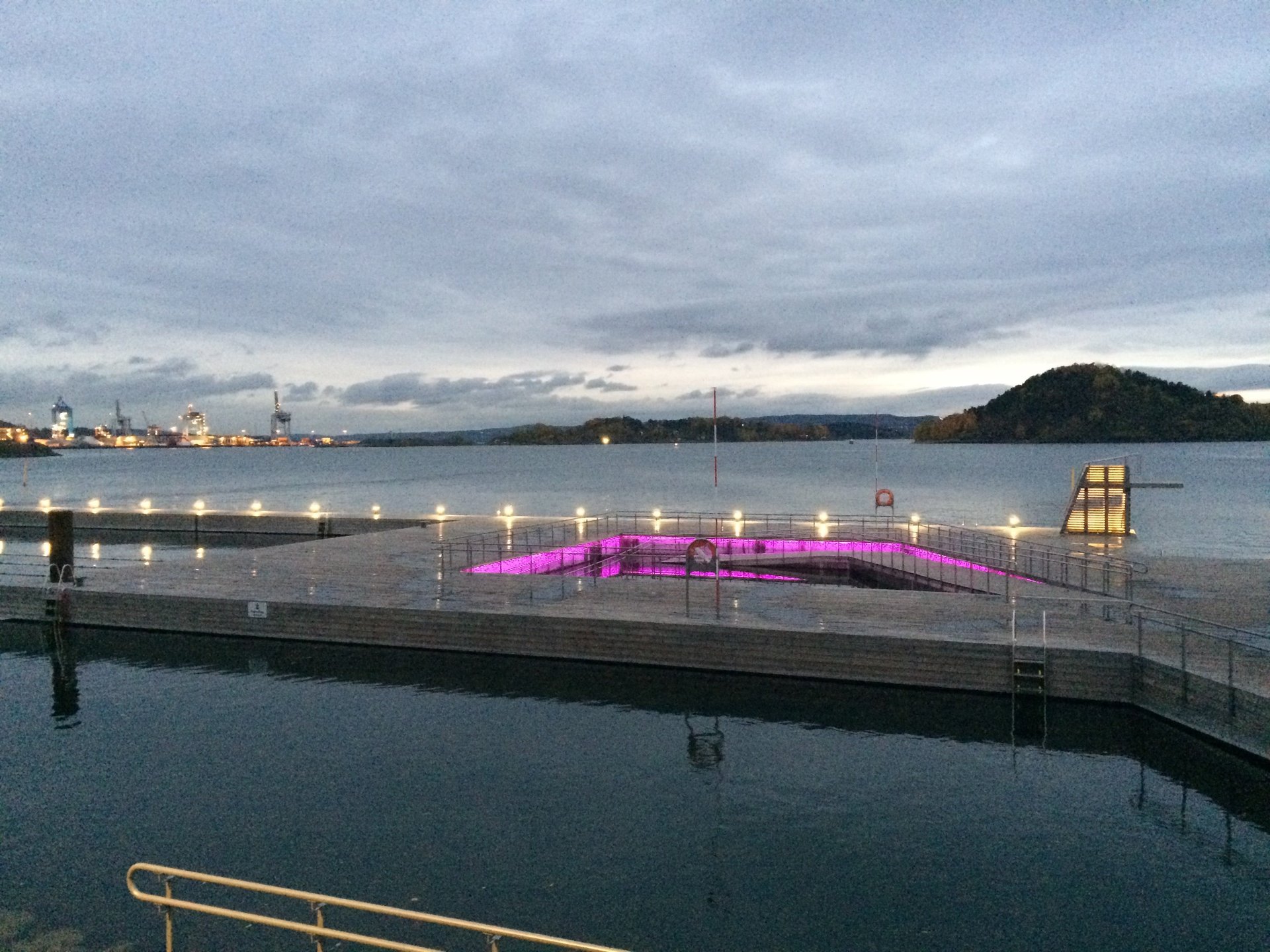
The idea of slowing down and reconnecting with nature, is present in the pool, too. It’s simple—deck, diving boards, a view of islands—free, and open all year to everyone (though, without a sauna, it becomes less tempting as the temperature drops).
“I hope that along the way we’re able to discuss a more organic way to develop” the spaces which have been planned but not yet begun, Hovind says, explaining that both the forest and farm projects have been “bottom up” processes, rather than being imposed from above.
“We’re moving in general too fast. We have to go more slowly, have more organic processes, and plan much further ahead than we do now. When you’re doing city development you can’t rely on linear processes … because you’ll miss things along the way.”
The curatorial vision is built around “space in which to think, to slow down, to congregate, an interruption in the everyday bustle of the city,” she says. Every place needs its stories, even if “you have to start building narratives about a place” as you go, she says.
Yes, she says. It’s possible.
This story was updated to include the role played by Situations.